Late on the afternoon of December 7, 1941, First Lady Eleanor Roosevelt found her husband upstairs. President Franklin D. Roosevelt had spent his afternoon working the phone after the Secretary of the Navy informed him of the attack on Pearl Harbor. Before going to the studio to do her weekly radio broadcast, Eleanor found FDR “more serene than he had appeared in a long time.” Eleanor observed that it was “steadying to know the final die was cast.”
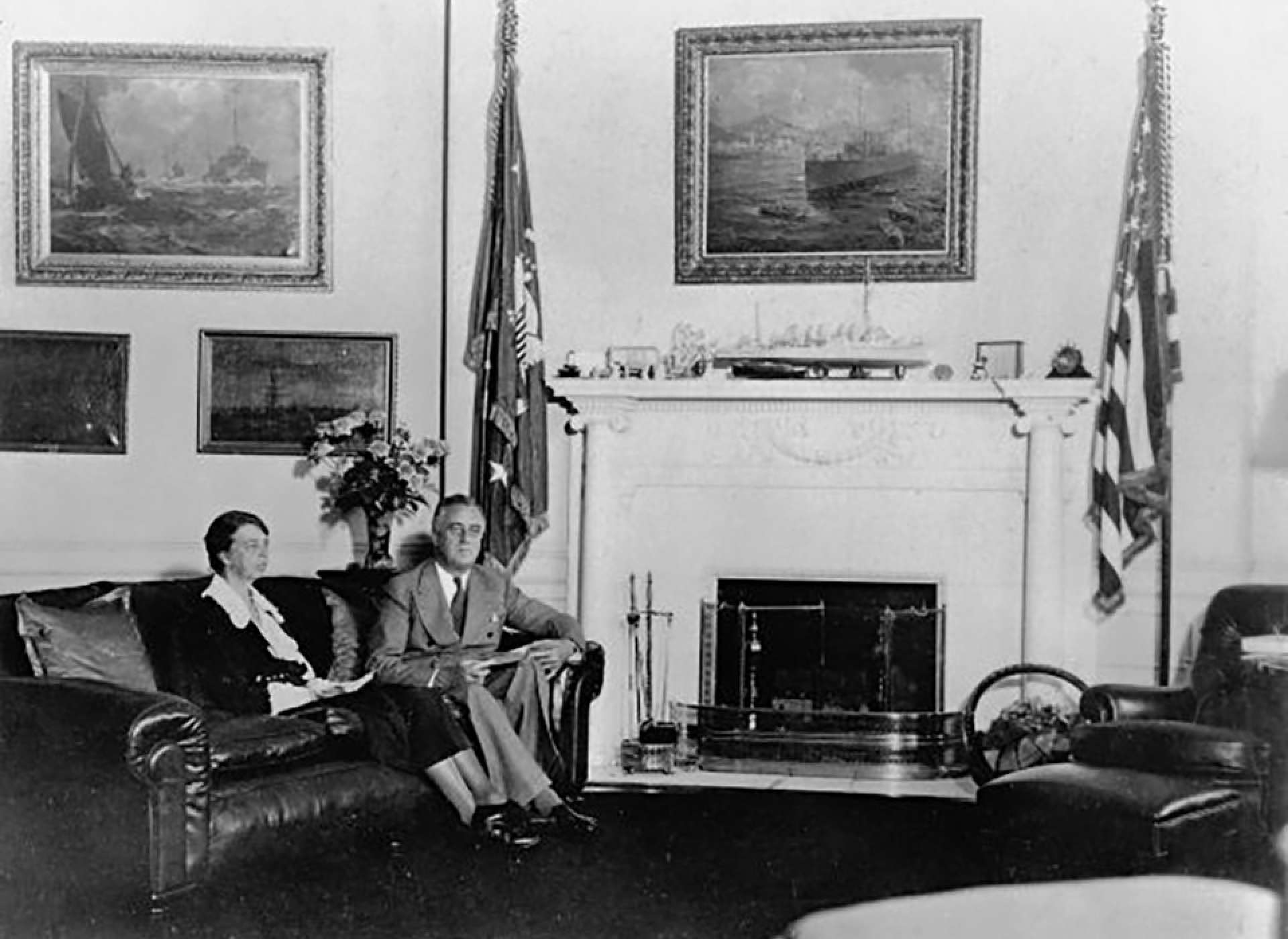
Franklin and Eleanor Roosevelt relaxing in his oval study in the White House. Image courtesy of the National Archives.
In her radio address, she observed that “For months now the knowledge that something of this kind might happen has been hanging over our heads and yet it seemed impossible to believe…” In the aftermath of the attack, however, she asserted, “That is all over now and there is no more uncertainty. We know what we have to face and we know that we are ready to face it.”
Certainly, her husband saw things the same way. The attack on Pearl Harbor clarified the strategic situation for FDR, and it ultimately resolved the murky tension between peace and war that he had contended with in the months prior to the attack. That evening he worked on drafts of his speech, declaring December 7 a date that will live in infamy, and calling for a declaration of war on Japan by the United States.
Across the Atlantic, British Prime Minister Winston Churchill took a similar approach and had a similar sentiment. On the evening of December 7, learning of the attack on Pearl Harbor and on British ships in the East Indies, Churchill worked the phones too, confirming, coordinating, and preparing the declaration of war. In their conversation, Roosevelt observed to Churchill, “We are all in the same boat now.” Later, having made his calls, Churchill came to the realization that with the United States as an ally and now actively in the war, the outcome was no longer in doubt. He recalled, “Being saturated and satiated with emotion and sensation, I went to bed and slept the sleep of the saved and thankful.”
Churchill’s mind, however, must have kept turning in his sleep. He noted, “As soon as I woke I decided to go over at once to see President Roosevelt.” That same day, he received the approval of the Cabinet and the King for such a voyage.
FDR initially expressed concern over the dangers of such a journey, particularly with the threat posed by German U-boats in the North Atlantic. He delayed giving Churchill approval for the trip.
Roosevelt told his cabinet several times that he expected Germany to declare war on the United States. Nonetheless, FDR intended to ask Congress only for a declaration of war on Japan. It seems evident that FDR hoped, as Woodrow Wilson had before him, to be judged by historians as having war thrust upon him. Eleanor characterized the Japanese attack as part of a “German strategy.”
Meanwhile, on December 8, Eleanor accompanied her husband to Capitol Hill for his “Day of Infamy” speech at 12:30 p.m. With what she described as a curious sense of “repetition” she was present for the second time in her life when an American President asked for a declaration of war.
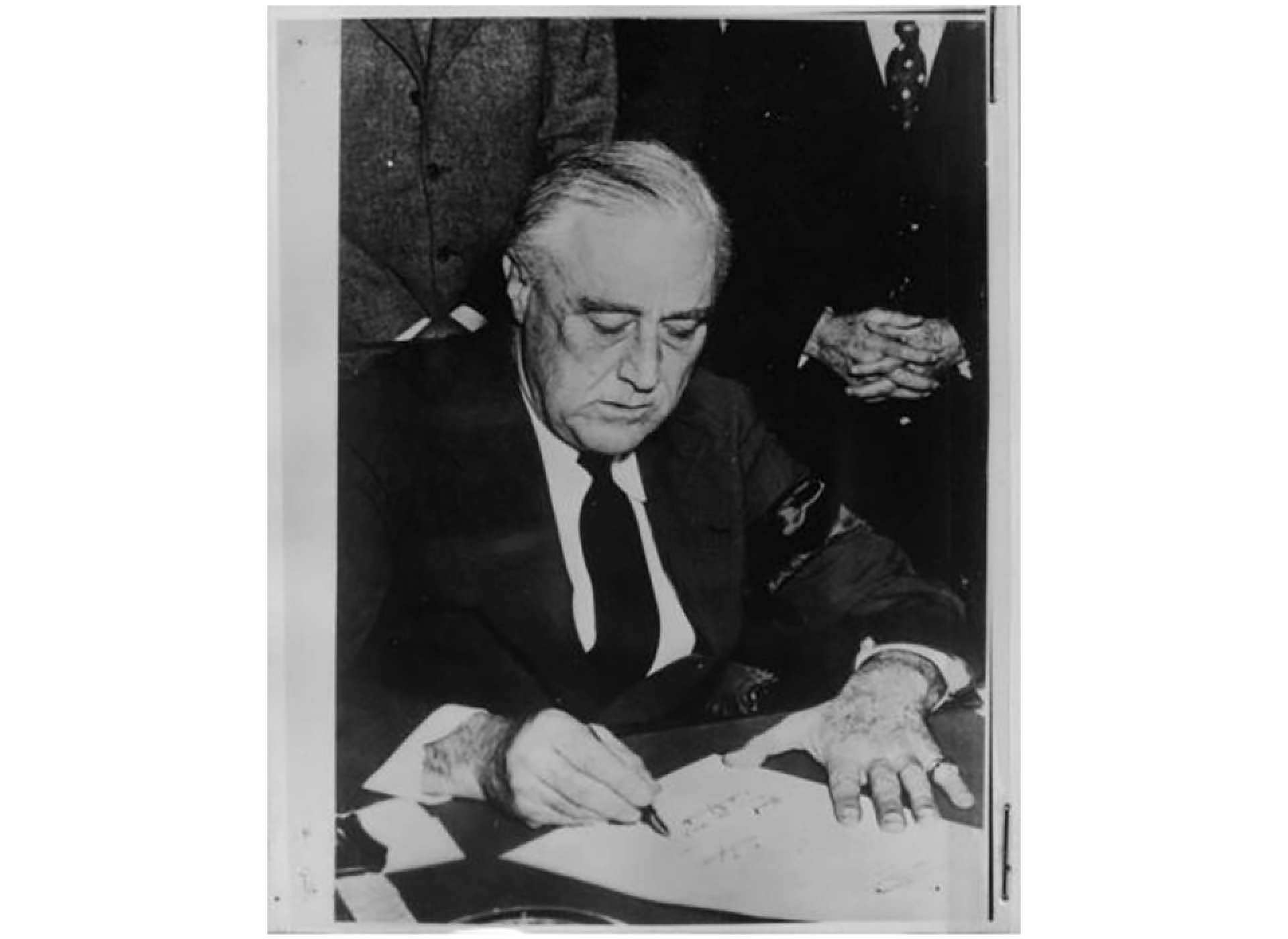
President Franklin D. Roosevelt signing the declaration of war against Japan on December 8, 1941. Image courtesy of the Library of Congress.
Throughout the war, Eleanor played many roles, and she went into action right away. Later that afternoon, Eleanor and New York City Mayor Fiorello LaGuardia took off for the West Coast. As co-chairs of the administration’s Office of Civilian Defense, they hoped a quick trip would bolster civil defense activities amid fears that the West Coast might soon be attacked, too. Submarines were reported off the coast, and reportedly American ships already had been torpedoed between Hawaii and the West Coast.
While en route, the pilot received word that San Francisco had been bombed. Rather than divert, Eleanor and Mayor LaGuardia resolved that, if the report was accurate, the only thing to do was to fly to San Francisco. In the end, they discovered the reports were unfounded; in this case, the Army had conducted a practice blackout, but failed to inform the mayor of San Francisco beforehand. A few days later Eleanor was back in the White House.
On December 11, Hitler declared war on the United States, and FDR asked Congress “to recognize a state of war between the United States and Germany,” which he described as a struggle between “the forces of justice and righteousness” pitted against “the forces of savagery and barbarism.” That day, FDR also signaled Churchill his okay for the trip. Churchill was soon at sea.
The Germans knew that Churchill was traveling, but his destination remained a matter of conjecture, perhaps the United States or more likely the Middle East. Out of concern about leaked news of Churchill’s destination, FDR kept the information extremely close. In the meantime, Churchill and his party were at sea and, before they arrived, President Roosevelt informed his wife Eleanor that they would be expecting visitors.
Eleanor recalled, “He told me that I could not know who was coming, nor how many, but I must be prepared to have them stay over Christmas.” Eleanor noted that FDR added as an afterthought that “I must see to it that we had good champagne and brandy in the house and plenty of whiskey.”
In the face of gale force winds in the wintery Atlantic, Churchill made the voyage. The foul weather no doubt added an air of secrecy, until his battleship the HMS Duke of York docked at Norfolk, Virginia on December 22. From there he flew to Washington.
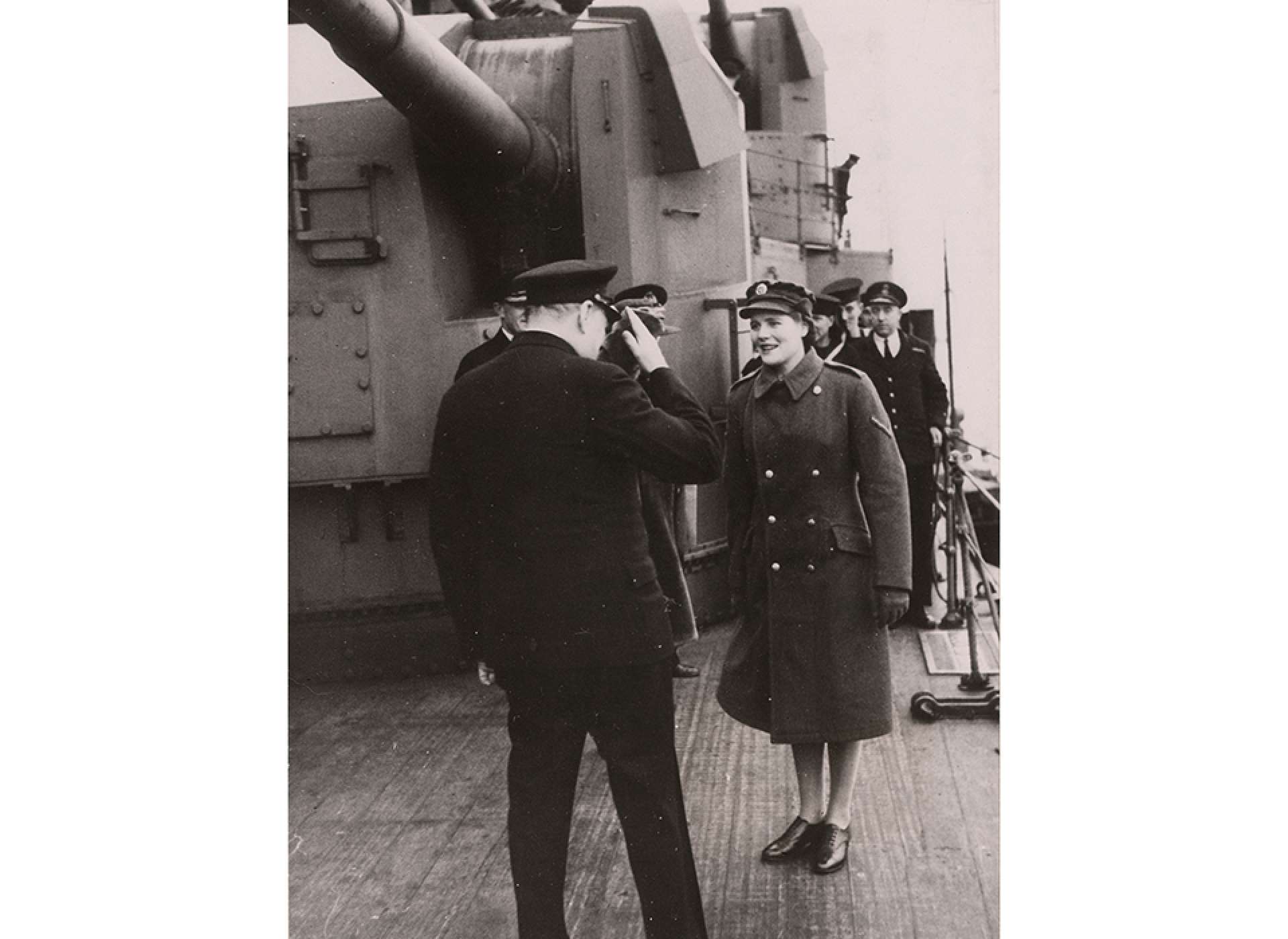
Churchill’s daughter Mary receives his farewell salute on board the HMS Duke of York. Image courtesy of the Library of Congress.
When Churchill’s plane from Norfolk landed at what is today Washington’s Reagan National Airport. FDR was there with his car to greet him and personally take him to the White House. Churchill stayed in the White House, on the second floor of the residence, remaining the personal guest of the Roosevelts for over three weeks until the end of the Washington Conference on January 14.
Today, very special dignitaries stay across Pennsylvania Avenue at the Blair House or at their embassies or ambassador’s residences. The Roosevelts really gave Churchill very special accommodations.
By any standard, Churchill’s entourage for that trip to Washington was not a small party. Churchill’s group consisted of 86 officers and staff, but, fortunately for the Roosevelts as hosts, they were lodged elsewhere. Still, a number of them constantly attended the Prime Minister at the White House, and it was a busy place.
There was a great deal to do…
During that period, FDR and Eleanor lit the national Christmas Tree, joined by Churchill and his delegation. FDR and Churchill also attended church together, sitting in the same pew. Churchill addressed Congress, and, of course, they worked out the overarching allied strategy for the global war. Many a late night was spent on strategy discussions—and it seems safe to say both Churchill and FDR were exhausted when the Washington Conference, code named ARCADIA, finally ended on January 14. It was highly stressful. Eleanor was deeply concerned about the terrible strain on FDR. Churchill, according to his doctor Lord Moran, may even have suffered a minor heart attack after his address to Congress on December 26.
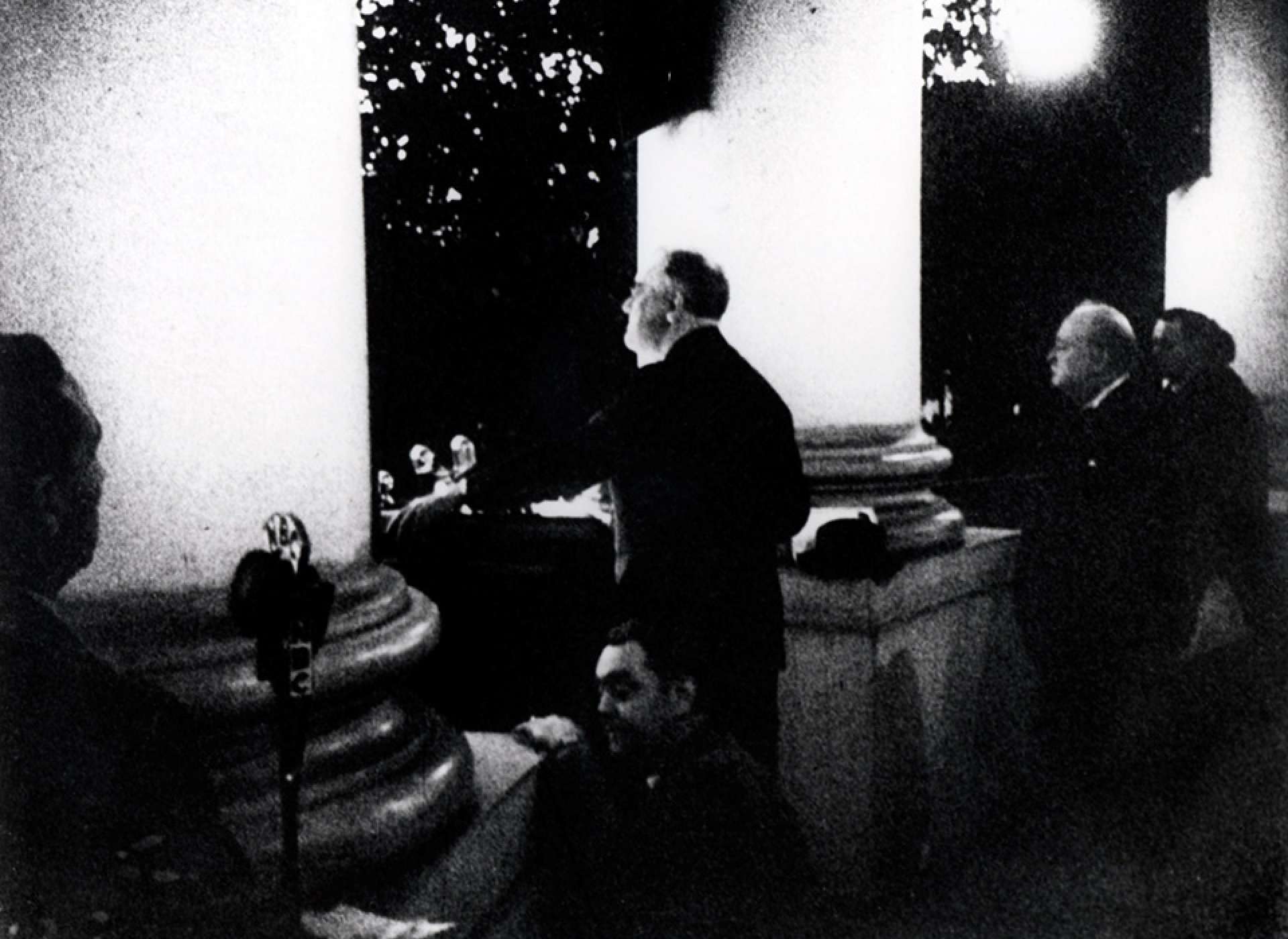
FDR and Churchill at the White House Christmas tree lighting ceremony. Image courtesy of the National Archives.
Certainly, Churchill and Roosevelt had established a constructive and prolific correspondence before Pearl Harbor. Before the United States entered World War II, the two leaders had exchanged over 200 telegrams, letters, or phone calls—and they had met for a few days in August 1941 off the coast of Newfoundland, for what produced the hugely important Atlantic Charter.
But even that level of regular engagement between national leaders would quickly be eclipsed by an even deeper relationship between the two leaders and their military chieftains. Their relationship changed and deepened as a result of Churchill’s stay at the White House as the guest of Franklin and Eleanor Roosevelt.
Churchill made five wartime trips to the United States for consultation, and the two leaders spent 113 days together between 1941 and 1945. During those American trips, Churchill stayed as a guest of the White House on four separate occasions. The Prime Minister also traveled with FDR to the President’s home at Hyde Park and to the Presidential retreat in Maryland, now known as Camp David, but then called Shangri-La.
At the same time, their volume of correspondence also increased dramatically after the visit. Between 1939 and 1945, Roosevelt and Churchill exchanged 1,700 letters and telegrams and they met in person 11 times.
To be sure, there were differences within the Anglo-American alliance. For example the allies agreed to an overall strategic priority of “Germany First,” but their respective militaries had different views on how best to defeat Nazi Germany. The Americans favored an early cross-channel attack, while the British advocated a strategy of pressure and peripheral operations until Germany was weakened, which would then set the stage for a cross-channel attack.
The wartime alliance framework between the United States and the United Kingdom, to include the Combined Chiefs of Staff, coalition headquarters in the field with Britain, Canada, Australia, and New Zealand, intelligence sharing with those countries—the 5 Eyes, and the partnership for atomic research, continues to resonate in the present alliance between the two countries. Our own Joint Chiefs of Staff were formed so they could collaborate with their British counterparts.
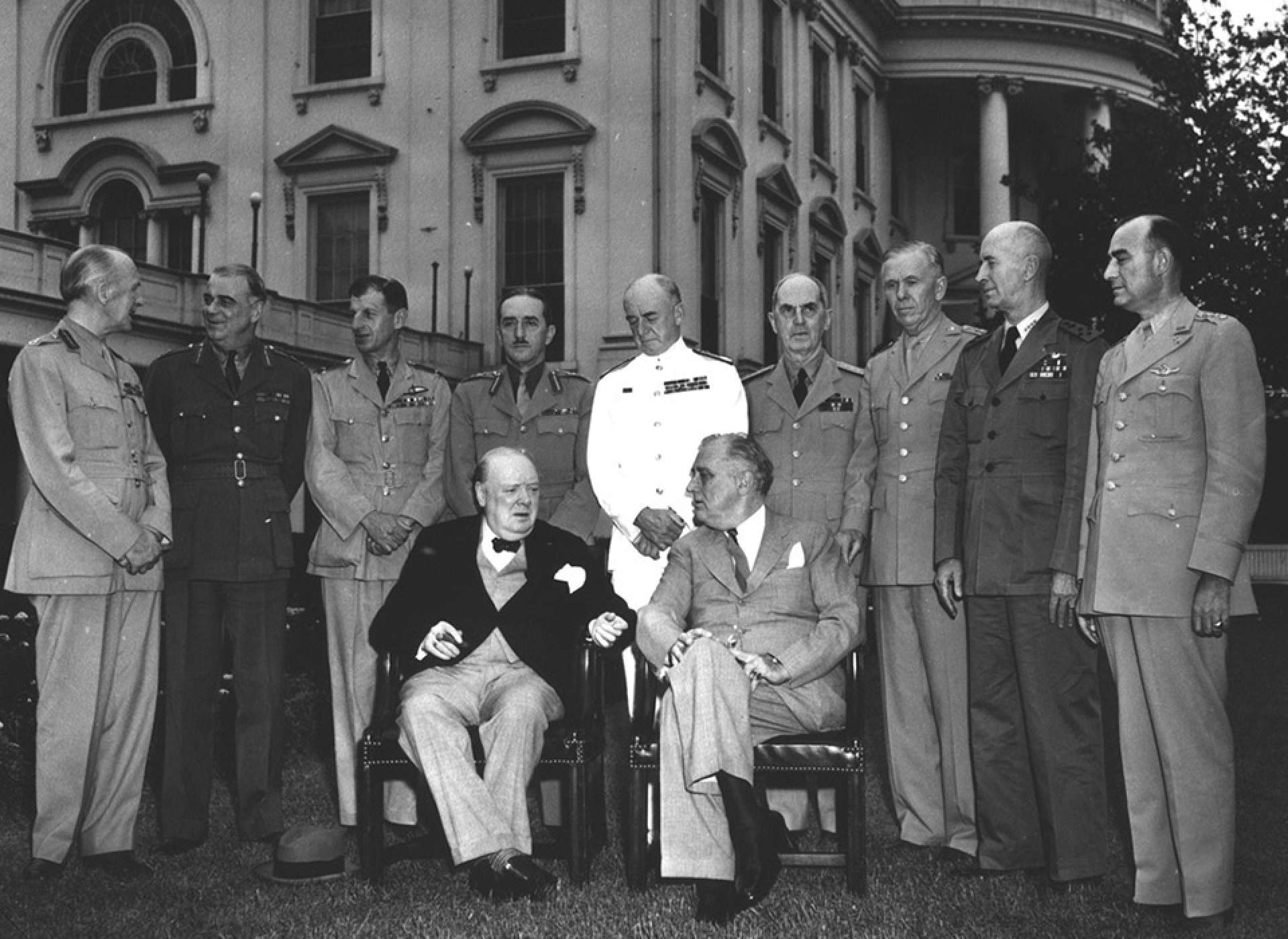
FDR, Churchill, and the Combined Chiefs of Staff outside the White House in May 1943, during a subsequent wartime conference in Washington. Image courtesy of the Franklin D. Roosevelt Presidential Library and Museum.
Concerning her house guest Winston Churchill, Eleanor noted, “He’s very human & I like him…” But she recognized that Churchill’s war aims did not fully comport with the ideas that she and FDR had for the postwar; she added “tho’ I don’t want him to control the peace!”
In the aftermath of Pearl Harbor, the constant contact and the degree of informality that ensued ensured that the Anglo-American wartime partnership and its legacy were built on trust and full transparency. A story perhaps illustrates this from Churchill’s first stay at the White House.
One morning, Roosevelt wheeled down the hall of the White House to talk with Churchill. Upon entering Churchill’s room, Roosevelt found Churchill, fresh from his bath, and pacing while dictating a message. Churchill’s towel, however, had fallen off while he paced the room. He was fully transparent for Roosevelt to see. FDR later described him as a “cherub” who was “pink and white all over”…
Churchill reportedly responded to the effect, “You see, Mr President, I have nothing to conceal from you.” Although he later denied saying this, Churchill did, however, report to King George VI, “Sir, I believe I am the only man in the world who has received the head of a nation without any clothes on.”
In addition to the Anglo-American “special relationship” that was instrumental in waging the war and persists today, another legacy of Churchill’s visit in the aftermath of Pearl Harbor was the foundation of a key pillar of the enduring postwar International Order.
FDR’s intrusion was the morning of January 1, 1942. It was an important moment; Roosevelt wanted to convey to Churchill his middle-of-the-night decision to change the name of the allied coalition fighting the Axis of Nazi Germany, Fascist Italy, and Imperial Japan from the “Associated Powers” to the “United Nations.”
Churchill approved of the change, and the name United Nations stuck. Later that very same day, representatives of 26 countries signed the Declaration of the United Nations, and 21 more countries formally joined the alliance prior to the end of the Second World War.
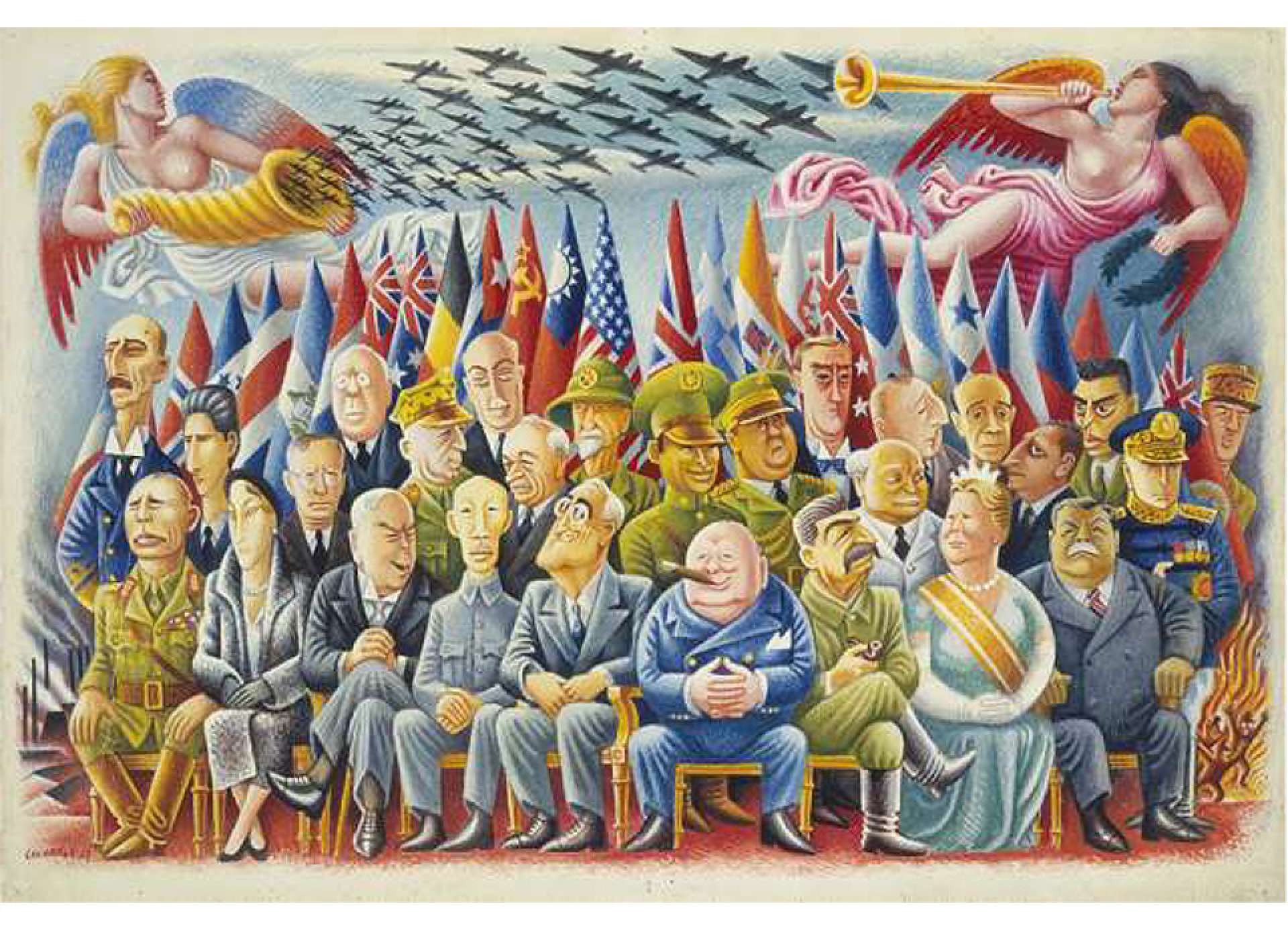
The leaders of the United Nations signatories of January 1, 1942 are caricatured in this contemporary drawing by the Mexican artist Miguel Covarrubias. Image courtesy of the Library of Congress.
In the Declaration of the United Nations the representatives endorsed the Atlantic Charter, pledged to uphold human rights and the sovereignty of nations, fight until there was a “complete victory” over the Axis powers (an aspect that would become known as “unconditional surrender” in another of FDR’s formulations at the Casablanca Conference), and support the future “establishment of a wider and permanent system of general security” in the postwar world.
The wartime alliance was true to their pledge. Once again our story involves San Francisco and the Roosevelts. In April 1945, the countries that during the war had signed the Declaration of the United Nations met in San Francisco for the conference founding the postwar United Nations.
FDR had been working on his speech for the opening of the conference but passed away before he could deliver it.
”The work, my friends, is peace; more than an end of this war—an end to the beginning of all wars; … as we go forward toward the greatest contribution that any generation of human beings can make in this world—the contribution of lasting peace—I ask you to keep up your faith….”
President Harry Truman appointed Eleanor Roosevelt as delegate to the United Nations General Assembly, and she became the first chair of the UN Commission on Human Rights.
On December 7, 1941, Eleanor had noted in her radio address that, in partnership with Britain and other allies, the country knew “what we have to face” in order to succeed in the war against militarism and to build a better world afterwards. Her resolve in the immediate aftermath of Pearl Harbor proved decisive in the postwar.
Eleanor Roosevelt’s guiding hand in the UN’s Universal Declaration of Human Rights ensured that the principles in that document embodied the vision of the 1941 Atlantic Charter, FDR’s Four Freedoms, and the spirit of the wartime United Nations, formalized 80 years ago on January 1, 1942.
Michael S. Bell, PhD
Mike Bell is the Executive Director of the Institute for the Study of War and Democracy.
Cite this article:
MLA Citation:
APA Citation:
Chicago Style Citation:
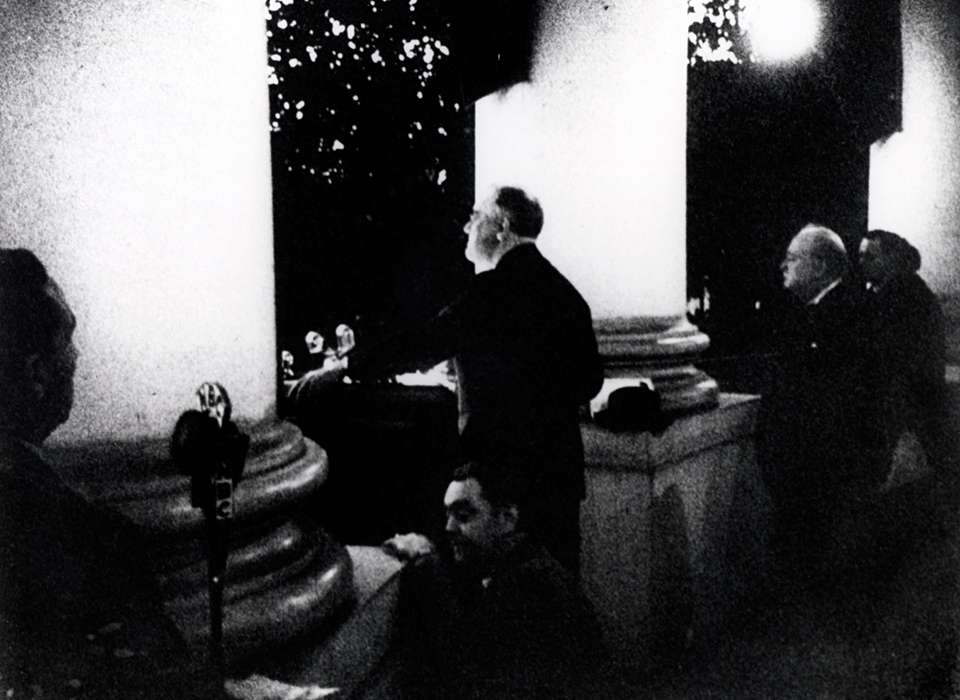
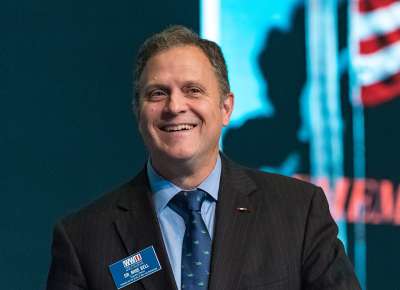
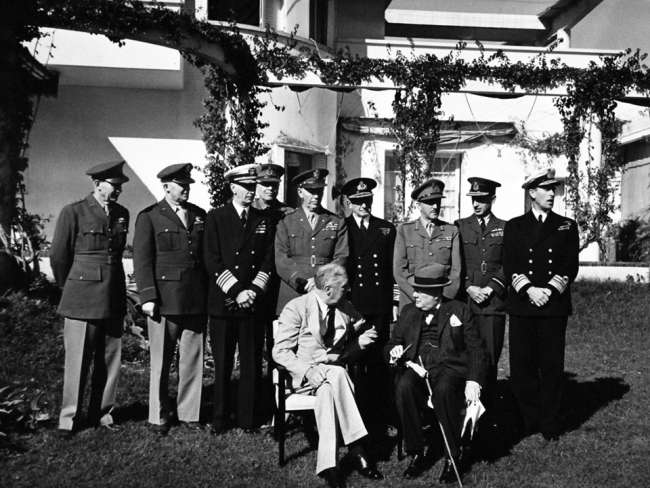
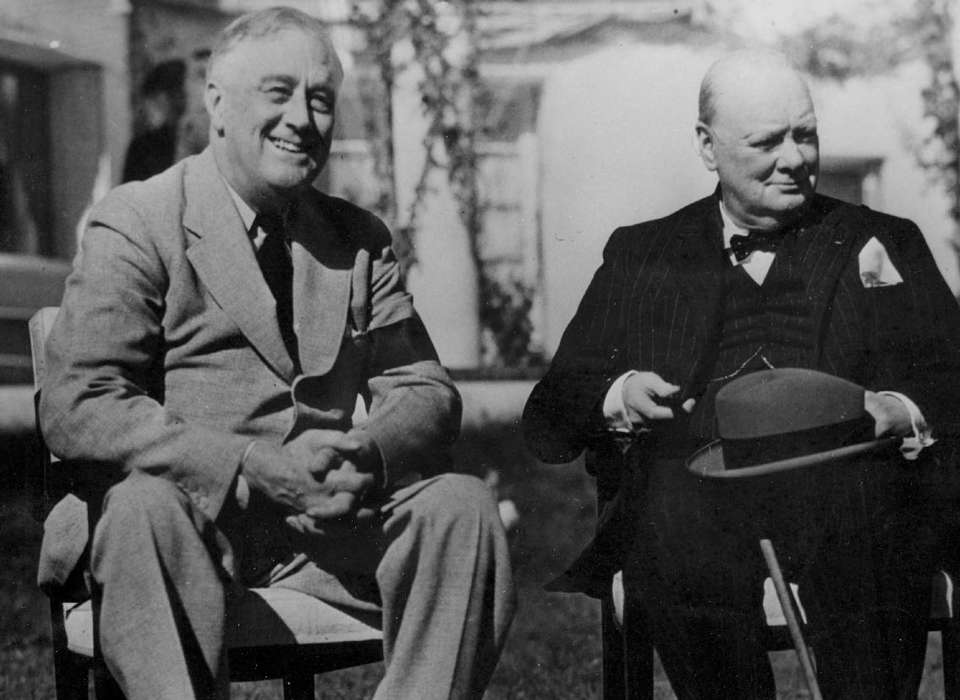
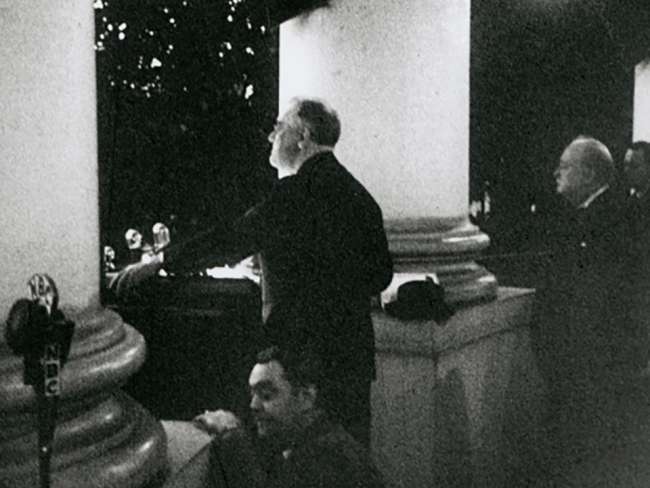




![Max Fuchs, New York City cantor, sings as Rabbi Sydney [sic] Lefkowitz, Richmond, VA, conducts the first Jewish services from Germany.](/sites/default/files/styles/max_650x650/public/2025-10/image1.jpg)


